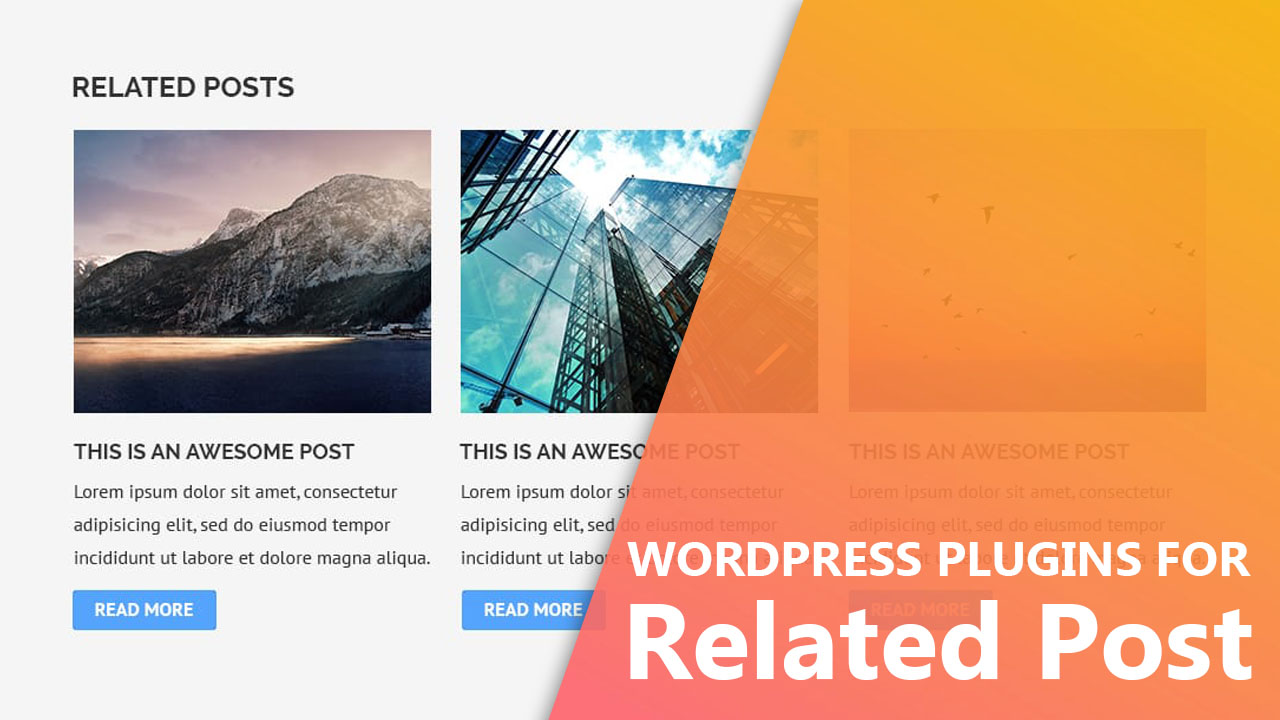Do WordPress related posts have that much power?
Nearly every blogger running a WordPress website is using related posts. Wondering why? For every novice bloggers and content publishers increasing engagement and reducing bounce rates turn out to be a challenging task.
But, having related posts on your site can help keep your visitors engaged with your site.
In this post, we’ll review what are related posts, some major benefits of having related posts and how they can be displayed using post tags in WordPress.
An Overview of Related Posts and Its Benefits
Related posts help readers view your related content from across the web or your site – in the form of outbound links – placed at the bottom of each WordPress post.
Below are some of the major reasons that makes related posts, so popular among bloggers and publishers:
- Boost Engagement – WordPress Related Posts
When any visitor spends time on reading a post, chances are that he will most likely want to view a similar topic. If that’s the case, then your visitors will spend longer time on your site, resulting in increasing engagement rate. And so, adding related posts will encourage readers to stay engaged with your site.
- Less Bounce Rate– WordPress Related Posts
When you read some interesting blog post on a site, and easily get to view its related posts, what you do?
It’s pretty obvious, you’ll probably like to read any one of those posts as well. Likewise, a visitor will be interested in reading two or more posts. The more time they’ll spend on your site, the less will be the bounce rate.

Displaying Related Posts in WordPress Site Using Post Tags
As you may know, taxonomy provides a way to combine things together as a group. And in WordPress, a taxonomy is a method to group some posts.
WordPress comes with 4 default taxonomies, and one of them is called as “Tags” or “Post Tags”. With the help of this taxonomy, you can tag each of your blog post containing multiple keywords.
The best part about using the post tags method to display related posts is that, you can select any display type based on your preference.
For instance, you can choose to show the posts as a vertical list, or in the form of widgets, ideally placed in the sidebar section of your theme.
Now, let’s proceed and understand the process of how you can show up related posts using post tags. For this purpose, you simply need to add the following code snippet in your WordPress website or blog’s single.php file:
<?php
//code display 5 related posts.
$post_tag = get_the_tags(); // list the posts
if ($post_tag){
foreach($post_tag as $tag){
$tags .= $tag->term_id',';
}
if ($tags) {
echo '<h2>Related Posts</h2>';
$args=array(
'tag__in' => array($tags),
'post__not_in' => array($post->ID),
'posts_per_page'=>5,
'caller_get_posts'=>1
);
$loop = new WP_Query($args);
if( $loop->have_posts() ) {
while ($loop->have_posts()) : $loop->the_post(); ?>
<p><a href="<?php the_permalink() ?>" title="Permanent Link to <?php
the_title_attribute(); ?>"><?php the_title(); ?></a></p>
<?php
endwhile;
}
}
?>
In the above code, the get_the_tags() function helps retrieve ID and all associated tags of the current post that are stored in an array. Next, the “foreach($posttags as $tag)” is a PHP loop used for interacting with the blog post tags stored in the array, and provides a list of similar tags one at a time.
Further, the query_posts() function helps in rendering the list of 5 blog posts using the same tags. In the above code snippet, “p” tag is used to display related blog posts in the form of a paragraph. However, you can choose to show different HTML tags that help improve visual representation of your related blog posts.
Note: You can place the above code snippet anywhere in your single.php file, ideally you should place it at the end of the main post and just above the comments section.
Wrapping Up! – WordPress Related Posts
Having related posts in your WordPress website is an effective strategy that helps keep site visitors engaged for a longer duration. By positioning the related blog posts in the right manner, you can increase your page views and lessen the bounce rate.
As more and more readers will view your blogs, the more are the chances that you’ll attain a unique niche in the WordPress blogging ecosystem.

















